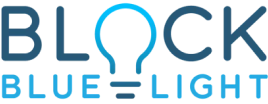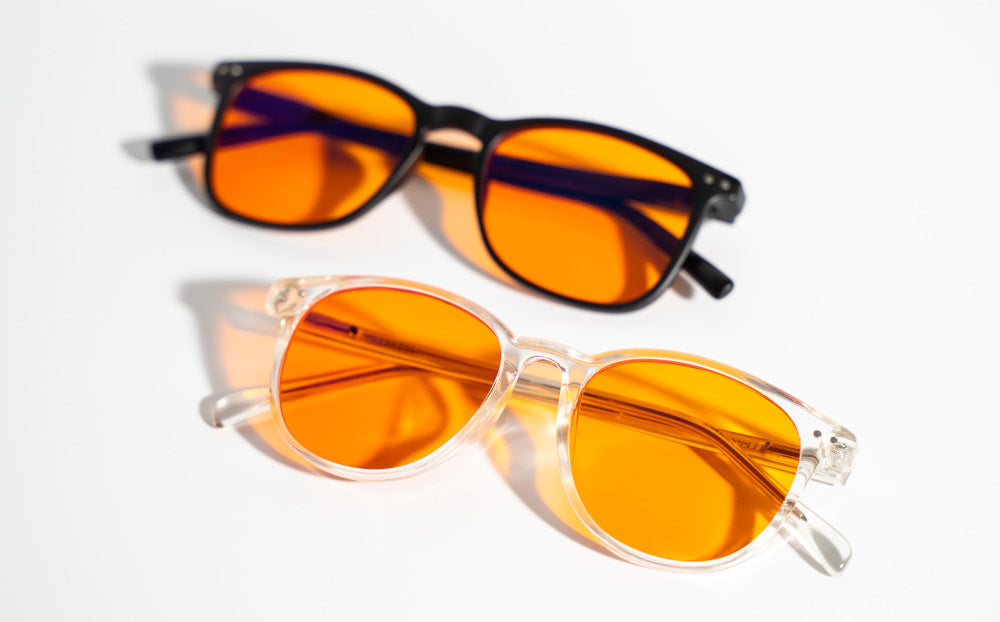Do you spend a lot of time in front of screens? If yes, you risk digital eye strain and other health problems. Digital eye strain is caused by excessive exposure to blue light.
Have you ever experienced symptoms such as:
- Dry eyes
- Watery eyes
- Head, neck and eyeaches
- Sleeplessness
- Blurred vision
-
Fatigue
These symptoms of digital eye strain can be combatted by wearing blue light glasses or prescription glasses that filter blue light if you have weak eyesight.
Although regular prescription glasses help with your eyesight, they do nothing to protect your eyes from blue light and reduce these symptoms.
Understanding digital eye strain and the other effects of blue light
Digital eye strain is a condition that affects people who spend a lot of time in front of their screens. Globally, people spend 6 hours and 58 minutes of their day in front of screens. This figure is even higher in developed countries such as Australia and the US- 6.6 to 7 hours daily.
This has adverse effects on your vision and health. Digital eye strain, also called Computer Vision Syndrome (CVS) occurs because of the blue light emitted from screens. Blue light has been shown to be disruptive to vision and sleep patterns.
What is blue light and why do I need a blue light filter on my prescription glasses?

Blue light is a type of visible light that comes from the sun, electronic devices such as mobiles, tablets and television, and artificial light sources such as tubelights, LED bulbs and fluorescent lights.
Blue light has a high energy wavelength compared to other colours in the light spectrum (light is composed of all colours of the rainbow).
In the right doses, blue light is healthy for you and does no damage to your vision. In fact, the blue light from the sun signals to our body that it’s daytime, makes us alert, boosts our cognition and regulates our daytime processes.
But because of the excessive time spent with artificial sources of blue light, it’s been linked to sleep and health problems.
Blue light can cause sleeplessness because it prevents the secretion of ‘melatonin’ the hormone responsible for sleep. This means that if you use screens or LEDs before bed, it will be harder for you to fall asleep. With long-term exposure, your sleep cycle will be disrupted.
That’s why it’s essential to use blue light glasses, and if you have weak eyesight, then opt for a blue light filter on your prescription glasses.
Regular blue light glasses vs. prescription glasses that filter blue light
Blue light glasses contain a special pigment that filters out the damaging wavelengths of blue light- 400-500nm. Prescription glasses that filter blue light are also built the same way- your lens is crafted according to your prescription. But it’s created from lightweight and shatterproof poly-carbonate with a special pigment that disperses blue light rays as they enter the lens.
How to get a blue light filter on prescription glasses?
If you’ve weak eyesight and are interested in adding blue light to prescription glasses, you have 3 options.
1. Buy prescription blue light glasses
Buy new prescription glasses with an inbuilt blue light filter. This is the best option because you'll be protected from artificial light every time you put your glasses on.
2. Use FITOVER blue light glasses
If you’re not ready to buy new prescription glasses, you can choose FITOVER or clip-on blue light glasses. These are loose and flexible to be clipped on top of your regular glasses. However wearing 2 glasses is not the best fashion statement!
3. Wear your prescription lenses with blue light glasses
If you have prescription lenses, you can wear regular non-prescription blue light glasses over them. However, this will mean you must wear both lenses and glasses, which may be inconvenient for you.
The best option is to buy prescription glasses with a blue light filter. You’ll be shielded from blue light whenever you pop your glasses on! You won't have to worry about 2 different items.
How to buy prescription glasses that filter blue light?

Get an eye exam
You can’t get prescription glasses made without an eye exam. It’s illegal to do so, so if you haven’t had an exam in the past 6 months, we suggest you get one from your optician.
Choose your desired protection
Blue light glasses come at different intensities or levels of protection. For daytime use, clear-lens glasses are the best. However, if you have severe light sensitivity or spend more than 8 hours a day in front of screens (such as gamers), go for yellow-lens glasses.
Amber-lens and red-lens glasses are suitable for wearing at night. Check out our lens colour guide if you are unsure.
Choose your desired frame
There are hundreds of trendy styles to choose from on BlockBlueLight. You can select any frame you like and have it crafted according to your prescription!
Choose your lens type
We offer options: Standard and extra light.
The standard lens has a decent thickness, and our customers say they have no problem wearing them. However, if you’re extra picky, you can choose to have your selected design made with a really thin lens.
Select your prescription vision; single vision / multifocal / progressive
After opening the product page, select whether you need single-vision lenses or multifocal-vision lenses.
Single-vision lenses correct only one vision type, whereas multifocal lenses are lenses that have multiple corrections within one lens in different sections. Ask your optician if you’re not sure.
Upload prescription file
Upload your prescription file in the section given.
Payment:
You can choose to pay at once or in 4 installments with Afterpay.
What about the blue light filter optometrists offer on prescription glasses?

The blue light filter offered by opticians blocks only 10-20% of blue light. We tested blue light glasses from top eyeglass shops and found that they weren’t targeting the full spectrum!
For daytime blue light glasses to be effective, they must filter the entire spectrum of blue light from 400-500 nanometres. A shorter range means you won’t be protected.
Optometrists' coating is a basic reflector that filters only 5-20% of blue light. This filter is unable to target above 430nm because, past 430 nm, you need a special pigment embedded in the lens to absorb the longer wavelengths. Just a reflective coating doesn’t work.
That is why optometrists are able to offer ‘blue-light protection’ so cheaply.
Don’t believe us?
When ordering the additional blue light filter on your glasses, ask your optician what range the filter targets and request a spectrophotometer report as proof. You’ll be surprised that most opticians won’t even know what range their glasses are filtering!
Our ScreenTime clear-lens glasses for daytime filter the whole blue light spectrum from 400-500nm. They have a special pigment embedded in the lens to protect you from the blue light spike at 455nm. This is the peak wavelength of blue light emitted from screens and lighting.
While our DayMax yellow glasses filter 100% of the damaging spike at 455nm for added protection. There aren’t many glasses on the market that claim to do that.
For proof, we’ve added a spectrophotometer report with each product in the product description. Each pair has been tested individually with a lab-grade spectrophotometer to ensure its genuineness.
For blue light blocking glasses for sleep to be effective, you need an amber or red lens which blocks 100% of blue light. Any less protection and you won’t experience improved sleep. Again, the 5-20% reflective coating from your optometrist won’t help here.
Read more about the different lens colours and which one suits you, here.
What to look for when buying prescription glasses that filter blue light?
Ask for a transmittance spectrum report/spectrophotometer report.
A transmittance spectrum report is a highly accurate report which shows the wavelengths being filtered by a lens. Regular light is shined through the lens, and the light coming from the other end is measured and displayed in the report. This report displays the ‘wavelength range’. It also displays the ‘percentage’ of light filtered at that range. For example, has blue light been filtered by 10%? By 50%? Or by 100%?

What should the report display for clear-lens glasses?
Check that the 400-500 nm range is filtered by at least 50% if you’re buying daytime glasses. If the glasses filter any less than 50% (say 10% or 20%, you won’t see any difference after using them)
What should the report display for yellow-lens glasses?
If you’re buying yellow-tinted glasses, check that they filter 100% of blue light in the lower range of the blue light spectrum at 400-455nm, in addition to the above.
Blockbluelight’s products are individually tested using a lab-grade spectrophotometer, so we guarantee their authenticity.
Secondly, ensure the glasses protect against the peak wavelength of blue light at 455nm. This is the range where most of the damage occurs. BlockBlueLight’s glasses have a special pigment to protect at this range.
When you’re buying products that affect your health, you can never be too careful. The light entering your eyes affects your eyesight, hormones, mood, appetite and sleep patterns. That’s why it’s important that you do research and buy research-backed prescription glasses that filter blue light.
At BlockBlueLight, we understand this and design all our products to work with your body, and in line with nature.
All of our prescription glasses that filter blue light have been tested individually by a lab-grade spectrophotometer, and the results are displayed with each product’s description on the website.
References:
https://www.comparethemarket.co.uk/energy/features/cost-of-screen-time/#:~:text=We%20asked%20Aussies%20aged%2018,for%20those%20aged%2025%2D34.
https://explodingtopics.com/blog/screen-time-stats#:~:text=Of%20Screen%20Time-,Average%20Screen%20Time%20Stats%202022,minutes%20on%20screen%20per%20day.





